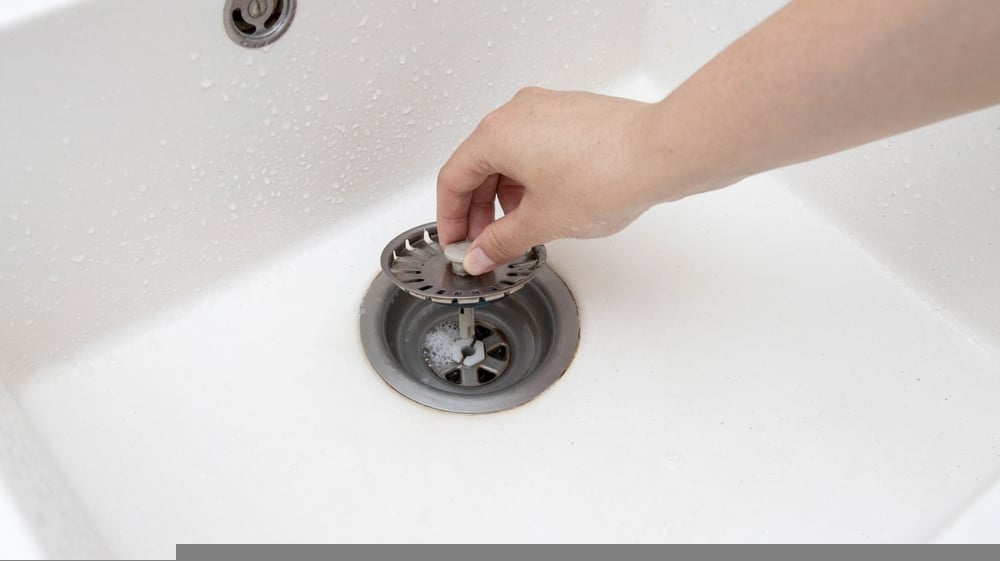9 Regular Mistakes That Cause Drain Blockage During Construction

One of the biggest home improvement issues of building a new home is drain blockage. Many house owners or builders overlook this aspect of house construction. As a result, a repetitive drain blockage starts to prevail within a few months of installation.
Drain or plumbing problems are hazardous, and it increases your maintenance cost every month. Besides, regular household chores like washing, cleaning, bathing, etc., become a pain due to the clogged pipes.
If you want to avoid these problems in your precious house, read this article as we’re sharing nine regular mistakes that cause drain blockage during construction.
Drain Blockage
Once your house is built completely, dealing with drain blockage will be much harder than it is during construction. Drain blockages first start out as slow drains, so treat the problem early before it gets worse.
Not resolving the clogged drain symptoms early or even before the house is fully built will cost you way more than expected.
Let’s find out those nine mistakes that you should be concerned about regarding drain blockage:
1. Undersized Pipes
If you’re renovating a house, there are little chances you’ll focus on its plumbing. However, if you’re building it from the scratch, then know this, undersized plumbing pipes are one of the main root causes of drain blockage.
The standard size for household pipes is four inches in diameter which often many technicians ignore during plumbing. They might bring undersized pipes or ones with a less smooth surface which impedes the drainage function.
That’s why always opt for the standard-size plumbing pipes or buy a little larger than that during the construction of your new home.
2. Natural Clogs
You must be careful while buying an old or renovated home as it can consist of clogged pipes. It might not appear as a big issue initially, but later, it will come down to a series of drain blockage problems.
Look around the front or back yard of the house and check if there are old trees with strong roots. Oftentimes, these trees develop roots beneath earth that grow into the sewer or bathroom pipes.
As a result, you’ll experience slow drains or flushing hazards.
3. Cheap Materials
Plumbing or sewer pipes made of cheap materials can break down or collect debris quickly and lead to drain blockage. Check if these pipe materials meet the standard quality and function smoothly before buying a house.
And if you’re building a house, then buy the appropriate pipes for this purpose. You must understand the importance of drainage options when building a new house, so you can procure the right materials for it.
Traditionally, copper pipes are far better than other pipes as they ensure longevity and endurance. Copper pipes are corrosion-free which allows both hot and cold water to pass through it flawlessly. They won’t break down easily and will keep your house’s water running and disposal smooth for a long time.
4. Improper Installation
Sometimes, you will experience the drain blockage even after using the best quality pipes in the market. The core reason behind this is improper installation.
If the plumbing is done haphazardly and in a haste, chances are the pipes will be unclutched and the drainage function will stop.
This will make the mud, dust, grit, etc., get through the broken pipes while stopping all kinds of small to large.
In turn, you’ll see water clogged in your kitchen or toilet sink, toilet pipe, bathtub, etc. If you don’t want to experience this mess, check on your plumber or mechanic, so they correctly install the pipes with appropriate nuts and bolts besides ensuring proper torque.
5. Debris from Construction Site
It’s highly possible that debris from the construction site will get into your pipes and sewers, making them nonfunctional in the future. Pieces of bricks, mortars, pebbles, etc. can get through to the pipe during their installation process.
Mostly this incident stays unattended or overlooked by the workers and the mechanic himself. Thus pipes get jammed due to the passing of grease, oil, food substance, etc. within a short span of time.
6. Faucets Leaking Water
When you’re buying a new house, chances are that there will remain some faulty faucets that will leak water in no time after you step into the house. Such leaky faucet problems may arise from cheap faucet materials, the expiration of the warranty, etc.
However, if you don’t want your water bill to skyrocket within a few months, taking care of the whole set of faucets in your house will be mandatory.
Start counting how many faucets you have in your house, including the kitchen, bathrooms, and rooftop. You should also check the garden hose if you have one.
Once done with identifying the faucets, replace and repair the faucets before starting to live in the house. Even if you rent your house to someone, this will consequently put the tenants through various utility hazards. And obviously, you’ll have to take care of the expenses that arise from these emergencies.
7. Problem in Water Heater
One of the many plumbing or drainage problems you may face while moving into a new house is the water heater problem. A water heater can show some signs of a problem if it’s an old machine or has developed some sort of malfunction due to external causes.
One of the common signs of a water heater problem is that you need to heat the running water at a higher temperature to meet your needs. This not only costs you more utility bills but at the same time, the excessive pressure in the heater machine will make it go down soon.
The reason behind the heater showing troubles could be dust or debris getting in from the outside or there might be a faulty internal thermostat.
You may try to relight the pilot light to see if the heater turns fully functional again. However, if it doesn’t, you must call a professional plumber to get it fixed at your earliest.
8. Wrong Slope Measurement
During construction, you must be careful about making the slope in its right measurement. A misaligned slope is likely to cause drain blockage later on when you’ll be using the water supply in your house.
A correct slope will let the running water flow nicely without any obstruction while reducing the chances of clogged pipes and sewers. Typically, the standard measurement is ¼ inch per foot while it may be a bit more depending on the construction terrain of the house.
For instance, you must consider roof drain specifications before making roof gutters and drainage systems. Hence, there won’t be water clogging the roof.
The slope must be an ergonomic addition to your construction that will make the water and waste disposal easy and flowing.
9. Not Hiring a Plumber
Many homeowners nowadays are attempting to DIY several construction works; plumbing is one of them. While cleaning a clogged sink pipe or garden hose by yourself is alright, plumbing in a new house is an intricate work that needs long-standing experience and skills.
If you try to get this job done all by yourself without having the necessary knowledge about it, things might go wrong followed by high expenses to repair any faults and blockages in the drain, pipes, and sewer.
So, call a local professional plumber who’s credible enough to provide you with the plumbing installation and post-installation services at a reasonable price.
Signs of Drain Blockage
Detecting drain blockage in the first place will save you from spending more on repairs than you have to. Let’s find some signs that indicate your house is going through some clogged pipe or drainage hurdles;
- You’ll hear gurgling noise in the pipes whenever you’re using kitchen faucets, toilet flush, garden hose, etc.
- There will be small pools of water on the sink, bathtub, toilet, or gutter.
- You might find your water utilities aren’t working properly, and there will be low pressure in toilet flush, faucets, etc.
- You will get the odor from the sink, gutter, or drain along with accumulated wad in them.
- You won’t be able to use multiple water outlets at a time; the water pressure will be low in one outlet while the other is running.
- There might be a pool of water in the basement.
- Bubbles in the toilet may indicate a problem in the sewer.
- There might be times when you’re taking a shower and standing in a pool of water because the water running from the shower isn’t draining properly.
As you’re once aware of the signs of water clogging or drain blockage in your house, it’s time to take necessary measures like fixing or cleaning the kitchen pipes, getting the plumbing checked and repaired by a plumber, etc.
Besides, do take preventive measures like not flushing any hard materials in the kitchen sink or toilet. Throwing things like celery, bones, fruit or vegetable peels, etc., down the toilet or drain will only get you jammed pipes or drainage systems.
Conclusion
For many house owners, repairing or replacing sewer or water pipes is a nightmare due to the immense cost of materials and service.
But if you act prudently, you may save your house from messes of jammed toilet pipes or a flooded basement.
Many of the construction mistakes can be taken care of in time to avoid drain blockage if you know where to look and how to tackle the problems.

Ravindra Ambegaonkar
Ravindra, the Marketing Manager at NY Engineers, holds an MBA from Staffordshire University and has helped us grow as a leading MEP engineering firm in the USA
Join 15,000+ Fellow Architects and Contractors
Get expert engineering tips straight to your inbox. Subscribe to the NY Engineers Blog below.


